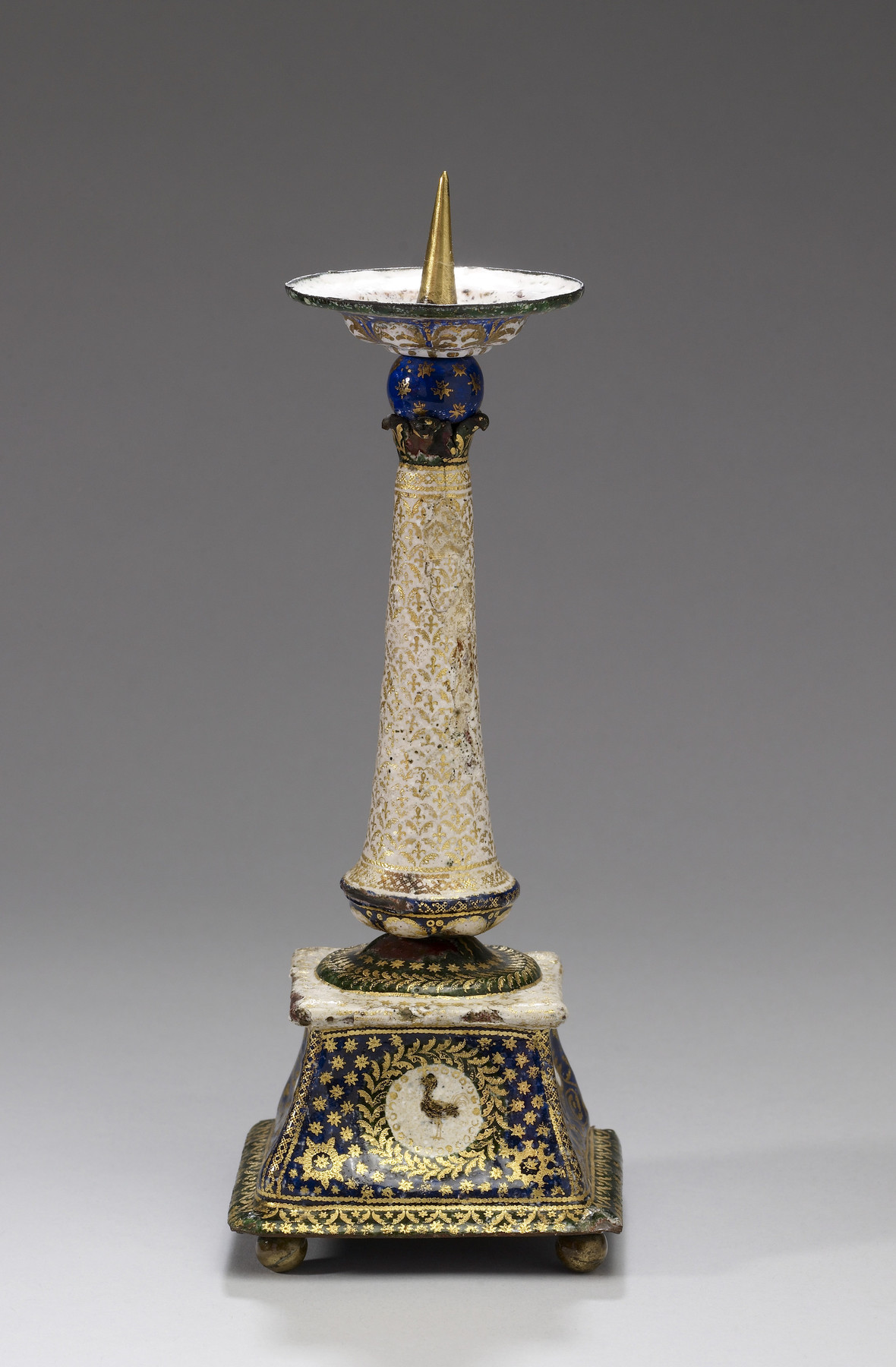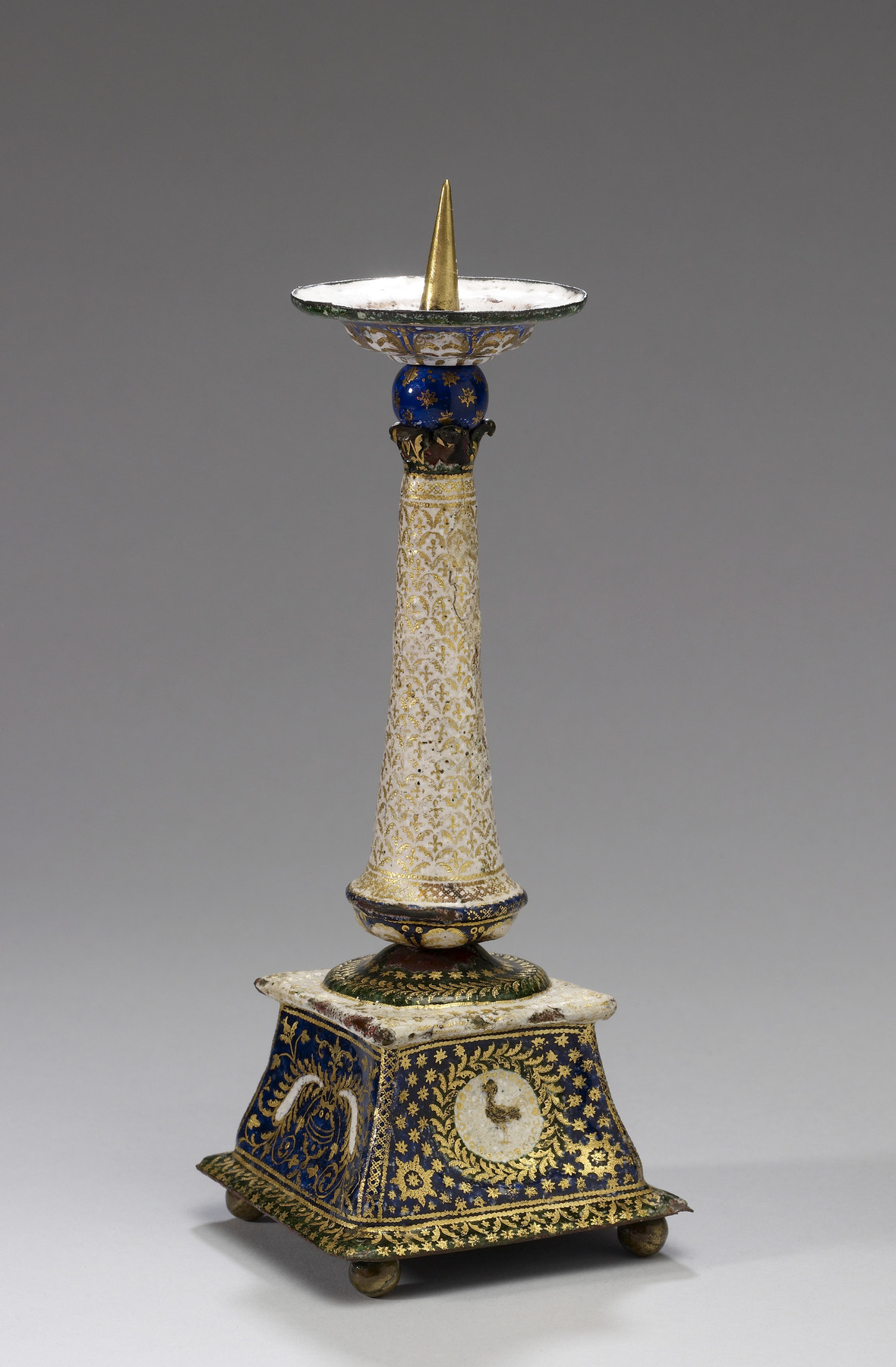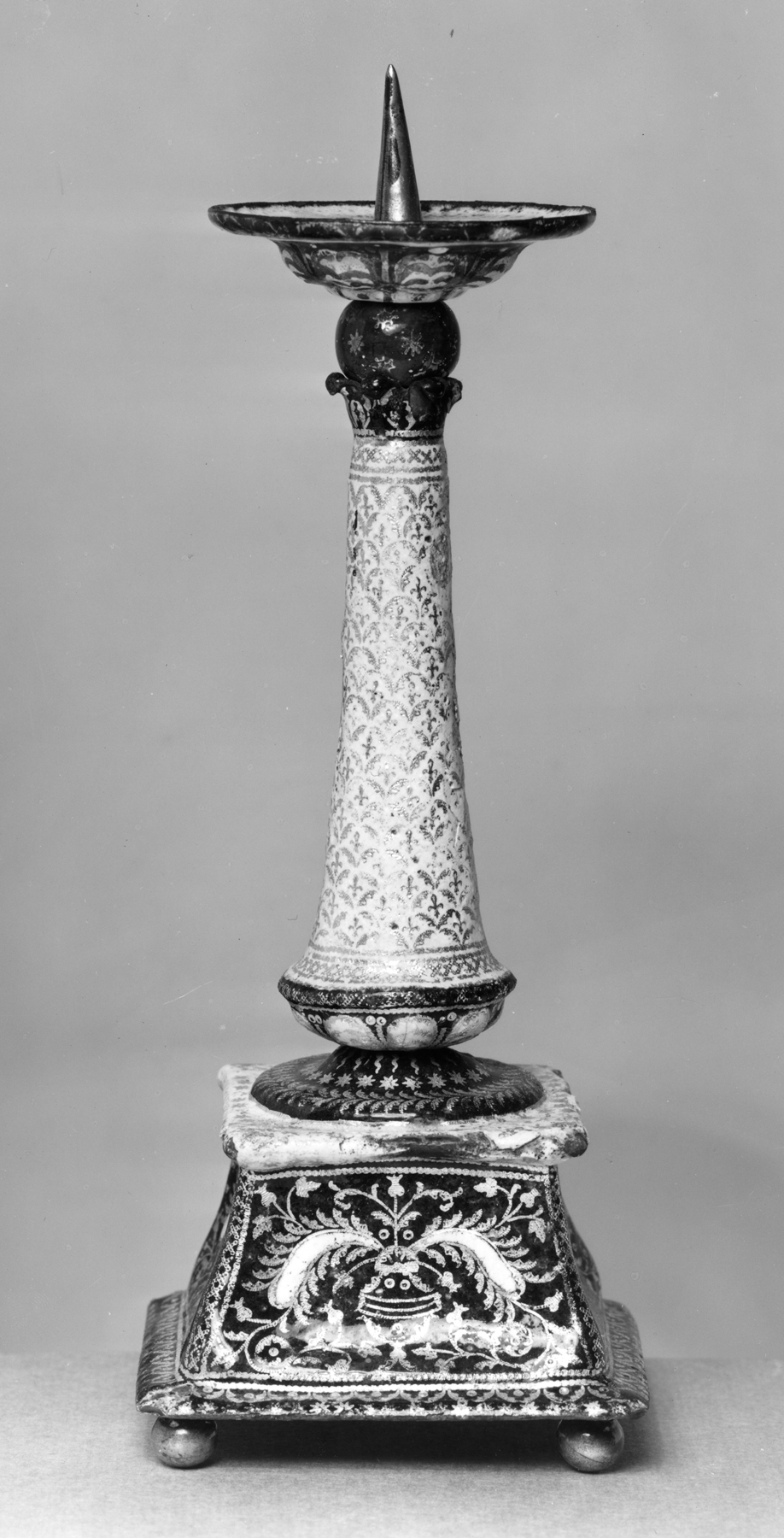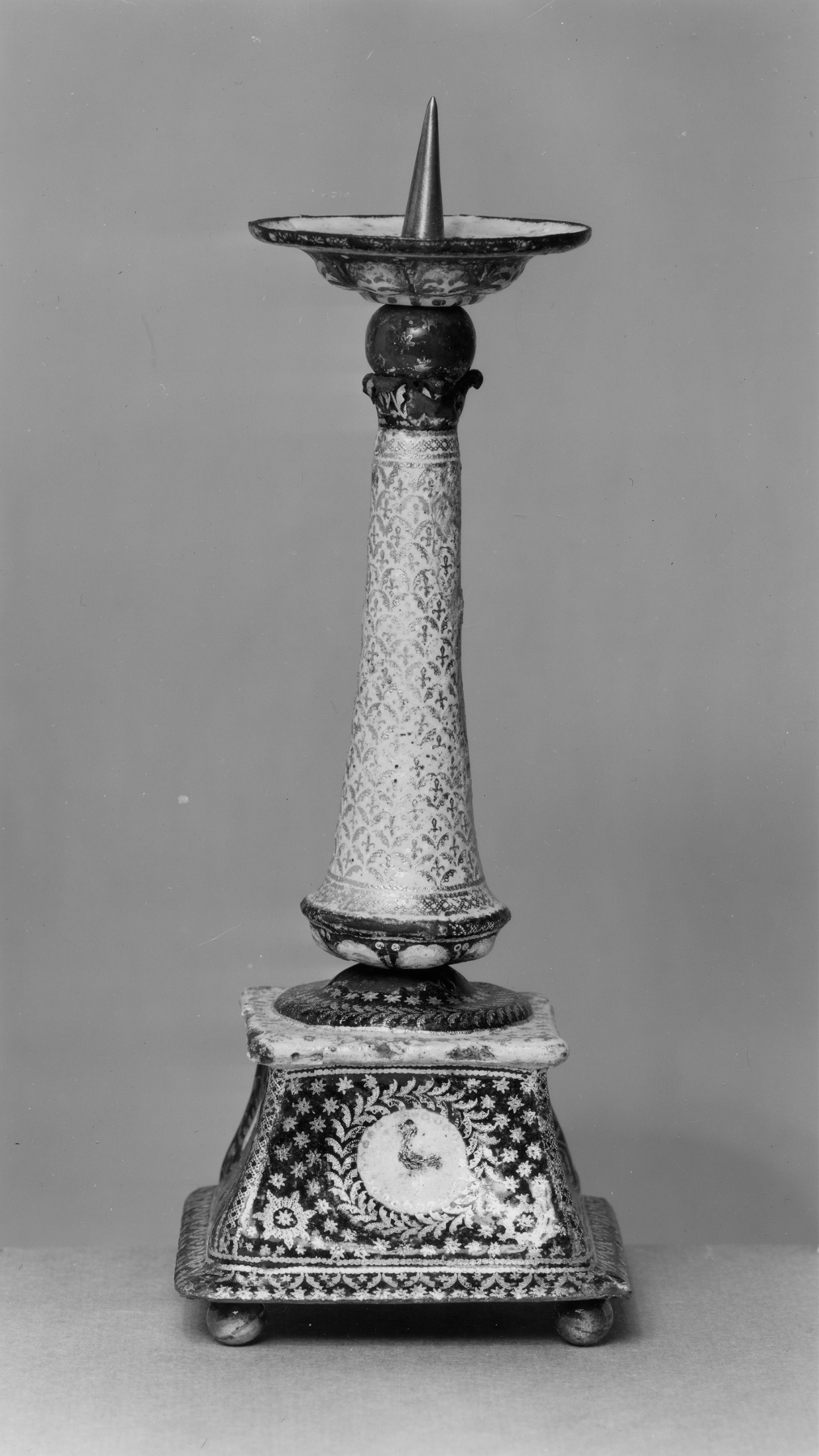Candlestick with Decorative Motifs
(Renaissance Europe )
This pricket candlestick is enameled in the combination of blue, green and white with delicate detailing in gold that is characteristic of Venetian painted enamels in the years around 1500 and can be compared with that of a large Venetian Footed Bowl in the collection (44.203). Enameling involves the application of a vitreous layer (essentially melted glass) to a support, in this case copper. As a Venetian specialty, it was a natural extension of the glass-making industry for which Venice was internationally famous.
Particularized description: At the base of the pricket is a gadrooned grease-pan. It is enameled inside in white, outside in white-and-blue and green-on-white with gilt ornament. It rests on a blue globe with green stars, which is supported by a green-enameled capital with six crockets picked out by gilding. This tops a tapering columnar stem enameled in white and decorated with a gilt diaper design enclosing fleurs-de-lys. The convex bottom of the stem has eight white gadroons on a blue ground and is attached by means of a depressed molded base, in green enamel with gilding, to a quadrangular trapezoidal plinth, the sides of which have gently undulating surfaces. The top of the plinth is white, the sides are blue and are decorated on each of three faces with a varying vase-shaped ornament from which spread two symmetrical white stems bearing running leaves and ending in scrolls. The fourth side shows a gilt wreath framing a white medallion whereon is painted in black and gold a bird holding a fleur-de-lys in its bill. The plinth rests on four brass balls, and is enameled on its inner surface in blue on white.
Provenance
Provenance (from the French provenir, 'to come from/forth') is the chronology of the ownership, custody, or location of a historical object. Learn more about provenance at the Walters.
Raoul Heilbronner, Paris, [date of acquisition unknown] by purchase; Henry Walters, Baltimore, 1909, by purchase; Walters Art Museum, 1931, by bequest.
Exhibitions
| 1996-1997 | Russian Enamels. The Walters Art Gallery, Baltimore. |
| 1958 | Three Great Centuries of Venetian Glass. Corning Museum of Glass, Corning. |
Conservation
| Date | Description | Narrative |
|---|---|---|
| Examination | Examination, analysis | |
| Examination | This object has been examined and analyzed using non-invasive, non-destructive techniques in order to better characterize the materials used to manufacture the original object and the restoration components. The surface has been cleaned in preparation for exhibition. | |
| 12/4/2018 | Examination | The object was given fills to reduce visually distracting losses. |
| 12/18/2018 | Treatment | cleaned; filled; inpainted; loss compensation; stabilized |
| 12/18/2018 | Treatment | The object was cleaned and stabilized. Areas of loss were filled and inpainted to visually reintegrate them into the object. |
Geographies
Italy, Venice (Place of Origin)
Measurements
H: 8 11/16 in. (22 cm)
Credit Line
Acquired by Henry Walters, 1911
Location in Museum
Accession Number
In libraries, galleries, museums, and archives, an accession number is a unique identifier assigned to each object in the collection.
In libraries, galleries, museums, and archives, an accession number is a unique identifier assigned to each object in the collection.
44.34








